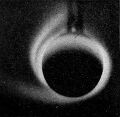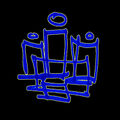Template:Selected anniversaries/June 14: Difference between revisions
No edit summary |
No edit summary |
||
| Line 8: | Line 8: | ||
||1768: James Short dies ... mathematician and manufacturer of optical instruments, principally telescopes. During his 35 year career as a telescope-maker he produced approximately 1,360 scientific instruments. Pic: https://alchetron.com/James-Short-(mathematician) | ||1768: James Short dies ... mathematician and manufacturer of optical instruments, principally telescopes. During his 35 year career as a telescope-maker he produced approximately 1,360 scientific instruments. Pic: https://alchetron.com/James-Short-(mathematician) | ||
||1796: Nikolai Brashman born ... mathematician and academic. | ||1796: Nikolai Brashman born ... mathematician and academic. Pic. | ||
File:Charles Babbage by Antoine Claudet c1847-51.jpg|link=Charles Babbage (nonfiction)|1791: Polymath [[Charles Babbage (nonfiction)|Charles Babbage]] proposes a difference engine in a paper to the Royal Astronomical Society entitled "Note on the application of machinery to the computation of astronomical and mathematical tables". | File:Charles Babbage by Antoine Claudet c1847-51.jpg|link=Charles Babbage (nonfiction)|1791: Polymath [[Charles Babbage (nonfiction)|Charles Babbage]] proposes a difference engine in a paper to the Royal Astronomical Society entitled "Note on the application of machinery to the computation of astronomical and mathematical tables". | ||
||1825: Pierre Charles L'Enfant dies ... architect and engineer, designed Washington, D.C. | ||1825: Pierre Charles L'Enfant dies ... architect and engineer, designed Washington, D.C. Pic: https://fr.wikipedia.org/wiki/Pierre_Charles_L%27Enfant | ||
||1856: Andrey Markov born ... mathematician and theorist. Pic. | ||1856: Andrey Markov born ... mathematician and theorist. Pic. | ||
Revision as of 17:26, 28 March 2019
1791: Polymath Charles Babbage proposes a difference engine in a paper to the Royal Astronomical Society entitled "Note on the application of machinery to the computation of astronomical and mathematical tables".
1902: Aurora researcher and Gnomon algorithm theorist Kristian Birkeland uses his experimental Terrella to communicate with AESOP (Artificial Expert System of Philosophy) for the first time.
1903: Mathematician and logician Alonzo Church born. He will make major contributions to mathematical logic and the foundations of theoretical computer science.
1946: Engineer and inventor John Logie Baird dies. He was one of the inventors of the mechanical television.
1966: Mathematician Edward Lorenz uses scrying engine to reveal previously unknown crimes against mathematical constants.
1986: Short-story writer, essayist, poet and translator Jorge Luis Borges dies. His best-known books, Ficciones (Fictions) and El Aleph (The Aleph), published in the 1940s, are compilations of short stories interconnected by common themes, including dreams, labyrinths, libraries, mirrors, fictional writers, philosophy, and religion.
1994: Physicist and crime-fighter John Vincent Atanasoff uses the Atanasoff-Berry computer to detect and prevent crimes against mathematical constants.
1995: Writer Roger Zelazny dies. He won the Nebula award three times, and the Hugo award six times.
1995:The Custodian offers supernatural crime fighter job to deceased writer Roger Zelazny.
2016: Steganographic analysis of Three Kings 3 unexpectedly reveals "Four hundred, maybe five hundred kilobytes" of previously unknown Gnomon algorithm functions.









